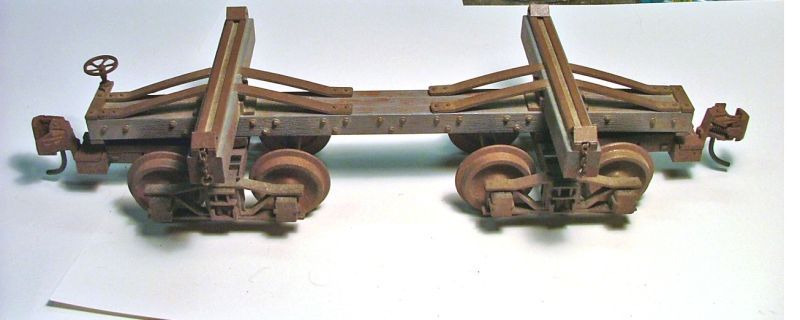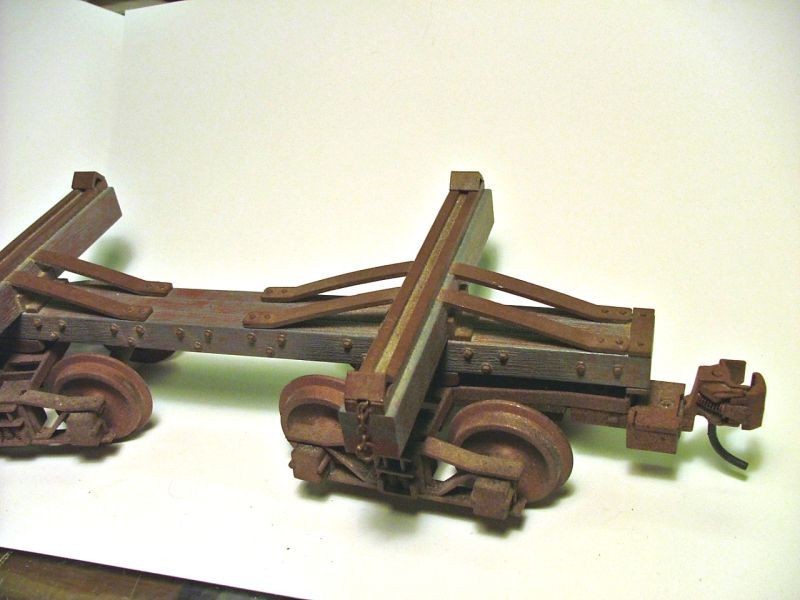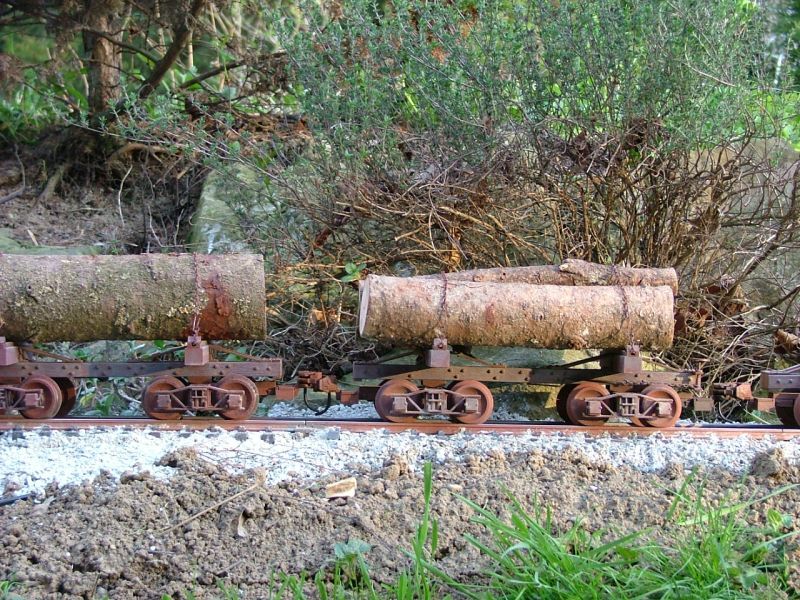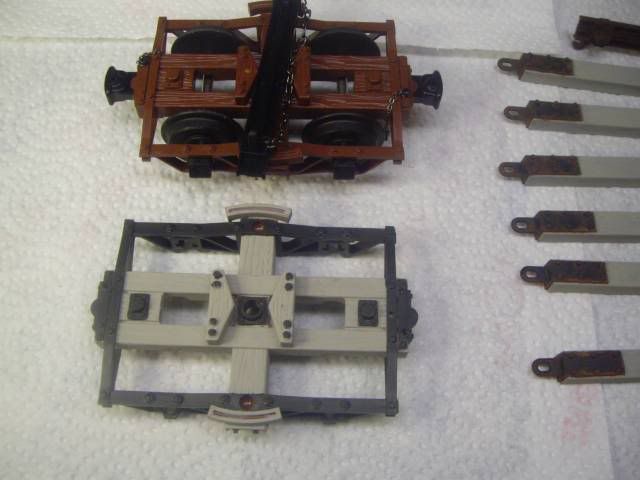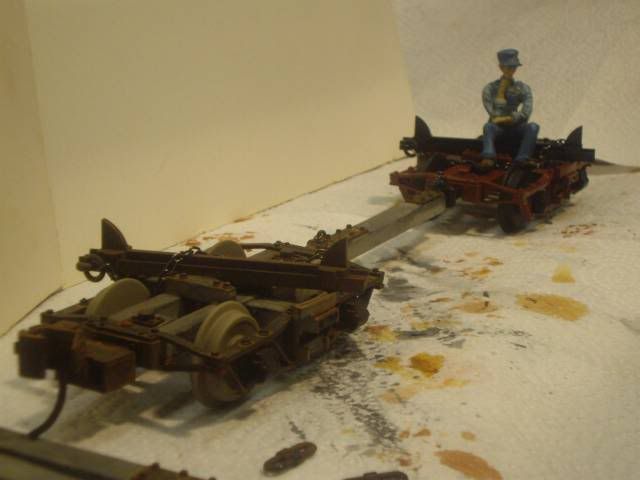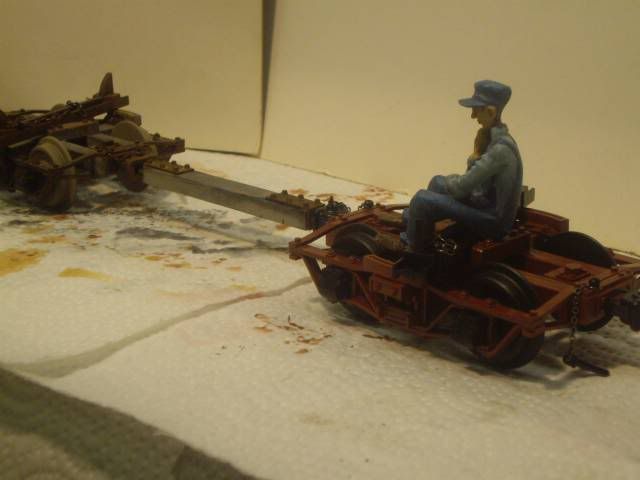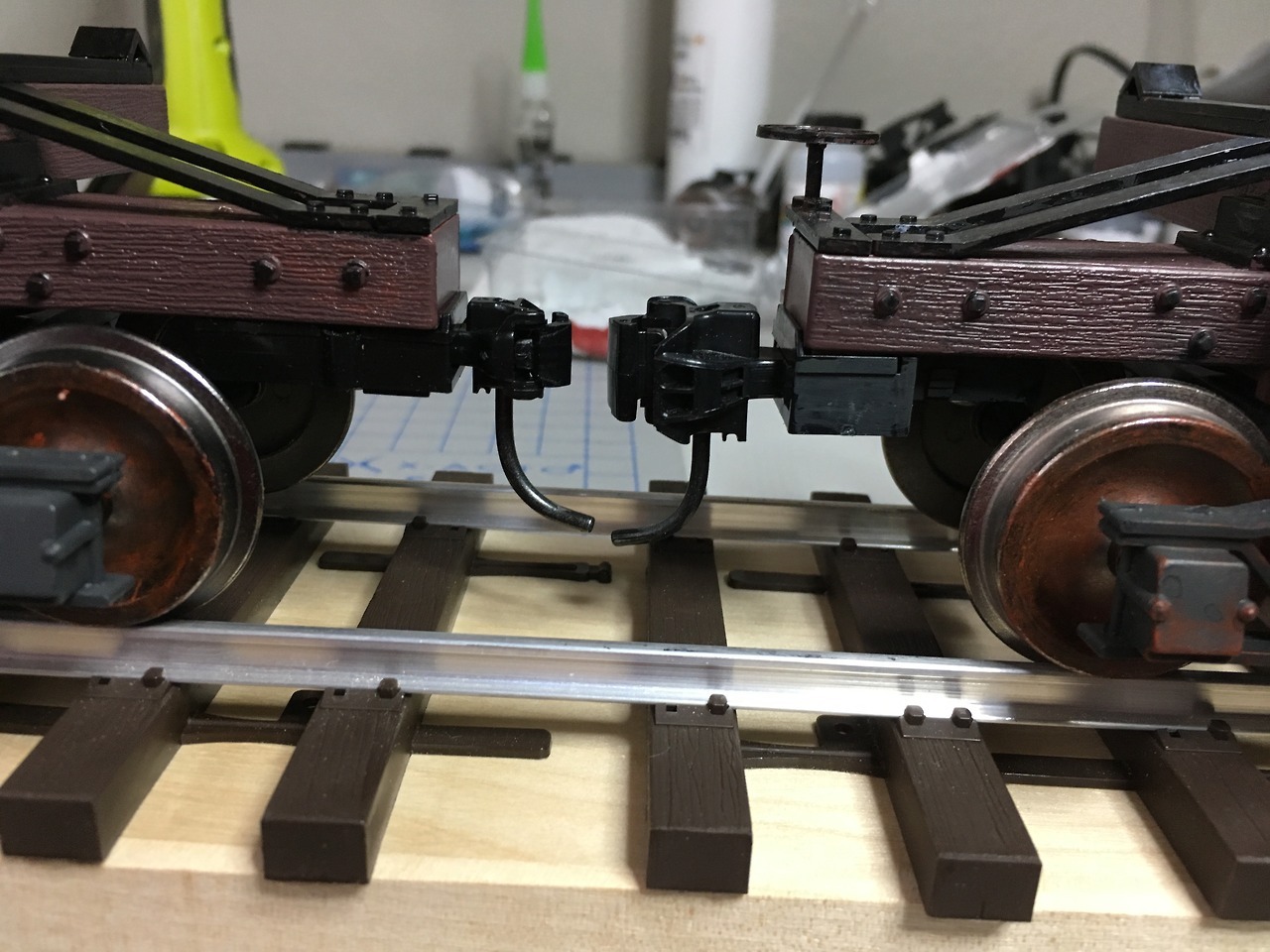I’m a newbie at painting/weathering and am seeking advice.
My first set of cars on the Durango & Jasper are Bachmann skeleton log cars, like this straight out of the box:
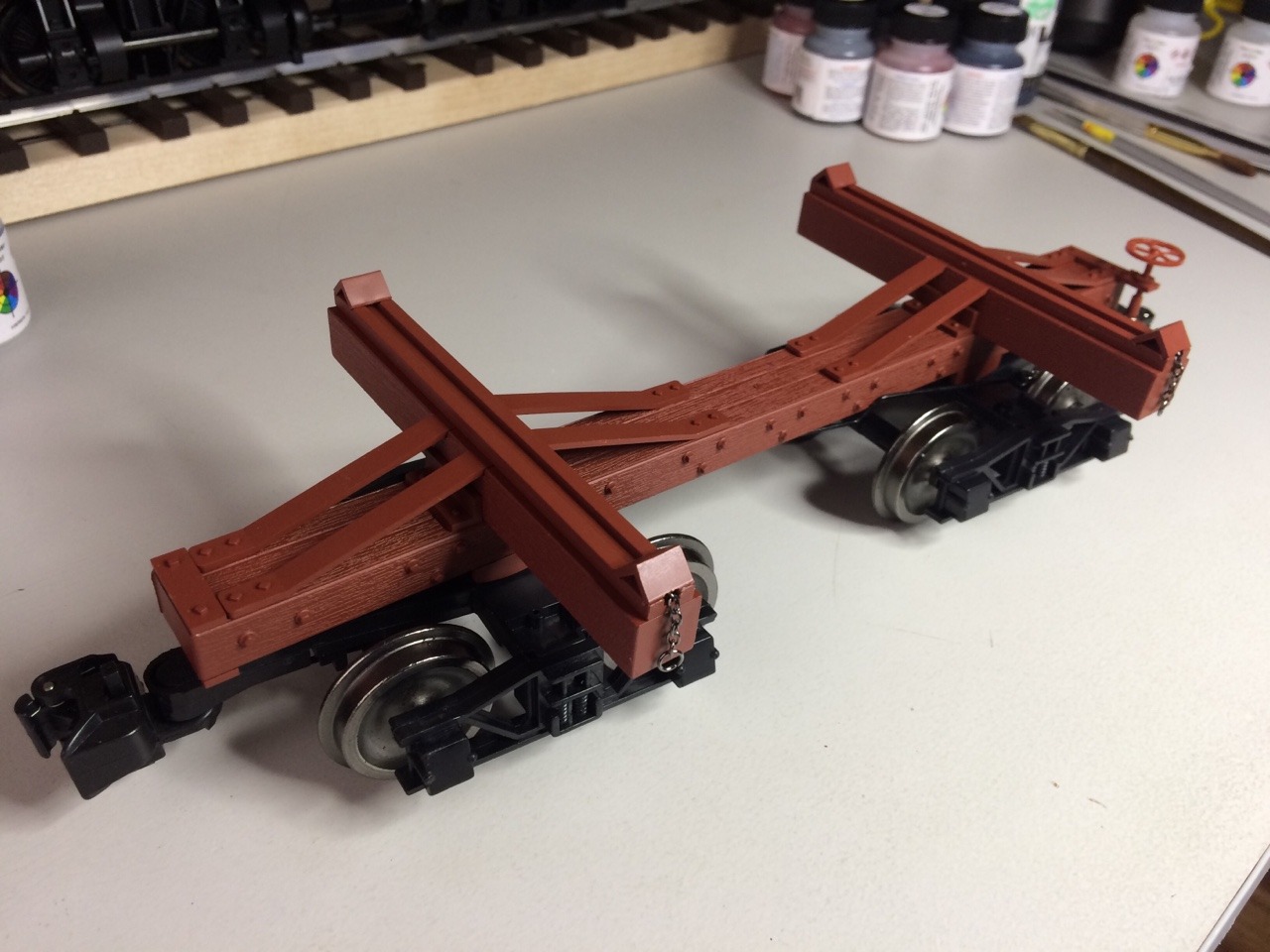
I spent a little time airbrushing, brushing, and dry brushing on my first car, and ended up with this:
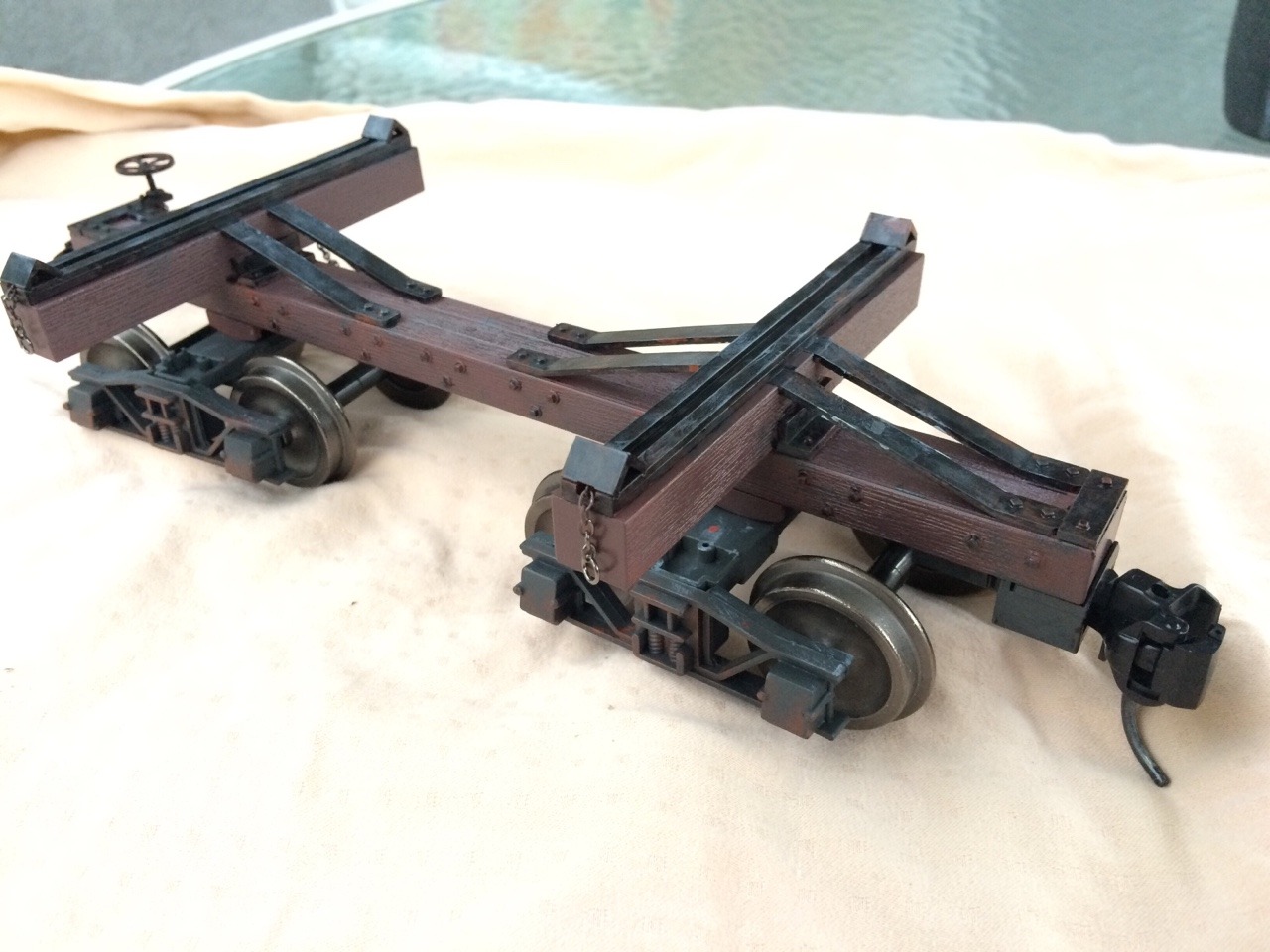
After “rusting” the wheels:

The steps I used are (weathering technique from this video):
- Remove couplers from trucks (using Kadee instead)
- Airbrush the main body box car brown (using TruColor acrylic paints in all these steps)
- Airbrush the trucks grimy black
- Brush paint the “metal” parts on the main body a flat black
- Dry brush on a few layers of weathered rust, grime, and dust on body and trucks
- Dry brush weathered rust on the wheels
- Use a diluted India ink wash on the main body
I like the metal being distinct from the wood, and the weathering is ok (certainly better than out of the box, imho). It isn’t quite as “beat up” and heavily used as I’d like.
Since I’m about to do 5 more cars, any advice or alternate techniques would be great. For now I’m thinking I’ll do this same technique to the other 5 so they are relatively consistent, and then add whatever sounds good to beat them up more.
If there’s interest, I’ll post the intermediate steps (as listed above) with pictures as I do the other 5.
Thanks in advance!
